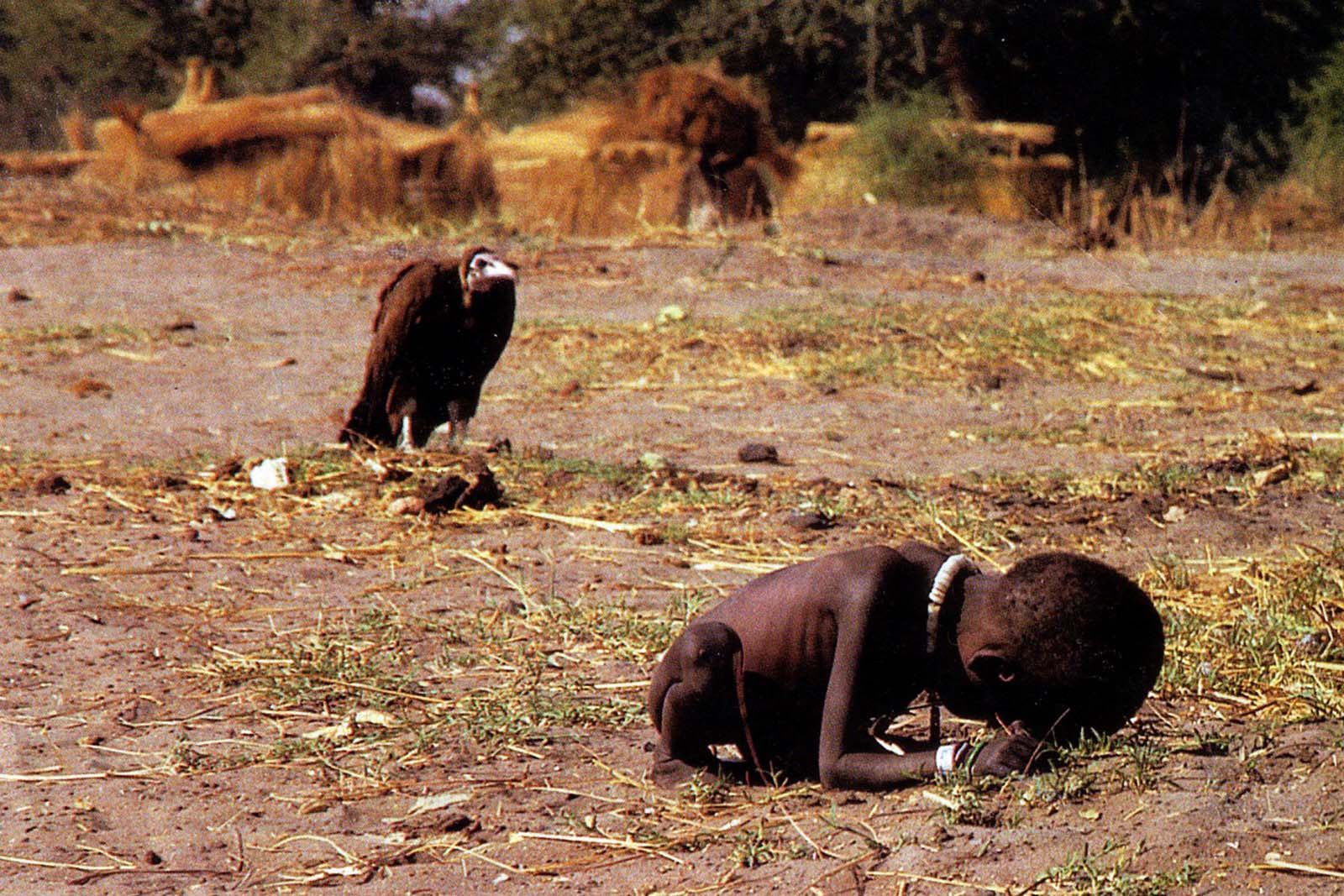The question “what makes an image iconic?” has been asked over and over again throughout the history of photography, and with good reason. Photography has developed into an art form and an aide to journalism as well as a method of historical documentation, all of which have contributed to a massive amount of images being produced and spread all through the media and online constantly. In fact, according to a 2014 survey, an average number of 1.8 billion images are digitally uploaded every single day, and the vast majority of them are almost instantly lost in the depths of personal social media accounts, or news articles that are quickly discarded and lost to time. So if so many images are being produced with little to no consequences, how is it that certain images become so famous and well-known, so much so that some iconic images are familiar to us without us ever knowing the true context of them?
Currently, social media plays a vastly important role in the world of news and journalism, with viral social media stories being picked up by actual newspapers, stories being shared online through sites like Twitter or Facebook, and many young people relying on social media to find out global news stories as they come into contact with them. As a result, the “aestheticism” of an image plays a big role in whether it becomes iconic or not in today’s world, because it needs to be eye-catching and emotionally-charged enough so that people share it with others and remember it as well as its original context. Some people may argue that this is unfortunate and unfair, that it is a clear indicator of how images and legitimate news nowadays have been completely devalued as a result of the younger generations being vain, narcissistic and obsessed with outward appearances. However, I strongly disagree with this. Throughout the history of iconic images, there is a clear pattern of the more poetically powerful and artistic images becoming incredibly popular and well-known time and time again, and often they (even unintentionally) mirror famous paintings and methods found in art such as the Golden Triangle or the Fibonacci Spiral. Consequently, it seems that in order for humanity to view a certain image as iconic and for that image to stand the test of time, it must have some sort of artistic structure. This can clearly be seen in iconic photos throughout history, for example Joe Rosenthal’s 1945 image of US soldiers raising an American flag, or the famous kiss between a US sailor and a woman in Times Square at the end of the Second World War (“V-J Day in Times Square), or the “Saigon Execution” image from the Vietnam War.
Additionally, an image can become iconic due to its context, either at the time or as a result of events afterwards, and whether it “reinforces or undermines dominant ideologies”, as in Susan Bright’s article (“Why is it famous?”). Some historical events carry such significance that they can elicit an emotional reaction from people simply by looking at them, for example how many of the images taken on 9/11 have become iconic and are widely known even to people who were not alive during those events. An example of this form of iconic imagery can be seen below.

This image was taken by a South African photographer called Kevin Carter in 1993, during the famine in Sudan, and it features a young boy (initially believed to be a girl) struggling to reach a United Nations food centre roughly half a mile away. The boy is clearly emaciated and is suffering from extreme famine and malnutrition, but it is the vulture in the background, hovering over the close-to-dying boy, that makes this image so powerful in my opinion. This almost artistic macabre imagery of the shadow of Death makes this image almost painful to look at, and creates a sense of guilt for the viewer, as they would most likely be looking at this in a newspaper, magazine or online article, from a position of privilege and comparative luxury in contrast with the small child dying alone in the wilderness. In fact, even directly after this photograph was taken, the photographer himself was so struck with guilt and empathy for the child that he helped him get to the feeding centre, and the child survived the ordeal. However this image was heavily criticized by people who asked why Carter even stopped long enough to take the photo at all, and even though he was awarded with the Pulitzer Prize for this image, he was so consumed by guilt and depression, traumatised by the things he had witnessed, he committed suicide by carbon monoxide poisoning only months after receiving the prize, in 1994.
The image features two main figures, positioned almost opposite to each other so that the image can be divided into two clear sections, representing Life and Death. The background of the image is mainly sepia-toned and features a brown colour palette, which increases the contrast between the background and the two figures in the foreground, as they are both darker colours and are more tonally contrasted. It clearly depicts the social issues of famine, poverty, but also subtly presenting the effects of extreme wealth inequality and the after-effects of colonialism in African countries.

This image is much more recent, having been taken during the BLM protests in London in mid-June this year, and it presents a black man carrying a white man to safety amidst police officers and other protesters. It reverses the typical “White Saviour” imagery that can be seen to perpetuate many forms of activism, the travel industry, and even the film industry. The issue of the “White Saviour” is that it shows white people “saving” struggling people of colour instead of showing those people of colour surmounting their own barriers, as is often the case, and it raises white voices talking about racism instead of simply amplifying the voices of people of colour who have been talking about racism and fighting racism for generations with relatively little media attention. It can also be found in aid-trips to African countries, which although probably had good intentions, end up perpetuating the stereotype of African countries as all being poor, war-ridden and rife with famine and disease. This photograph goes against all that, and as a result may be more memorable to many viewers who have been subjected to the same image of the nice, kind white person saving the poor, hungry black person again and again and again.
This photograph, much like the previous one, is centered around two figures, however in this case they are both human instead of a human and an animal. Both images depict social issues, however this image is different in that it illustrates racism and current affairs, which may help it become a more iconic image, as images with political meanings behind them that were taken during periods of great societal change often tend to be more long-lasting and become “iconic” in the public’s view. The image is in full colour, but the contrast between the two main figures’ skin tones is powerful enough to draw the eye immediately and becomes the main focal point of the image. The camera lens was also slightly tilted when the pictures was taken, meaning the image and the people it features are angled, which adds a sense of movement to the photograph in its entirety and makes it more dynamic and actually interesting.
In conclusion, it tends to be the context in which they were taken that makes certain images iconic (or to go viral, in the online world), whether that be their political and global context, for example photographs taken during crucial moments in history or depicting traumatic moments in time, or their emotional context, for example if it depicts a particularly powerful emotion such as pain, fear, love or hatred. Symbolism also plays an important role, for instance the imagery of Life vs Death, or the White Saviour, or even the ever-popular Madonna and Child, a theme often found in religious imagery but also (unconsciously or not) replicated throughout many iconic images and art.

Well done…this is mostly clear with a personal edge to it too. Continue to be critical / challenging, your writing is a strong point I think and you can really move forward with this so that YOU have something to say with your own practical work.
PROVOKE-DISRUPT-QUESTION-CHALLENGE!
Good luck with your development from here…